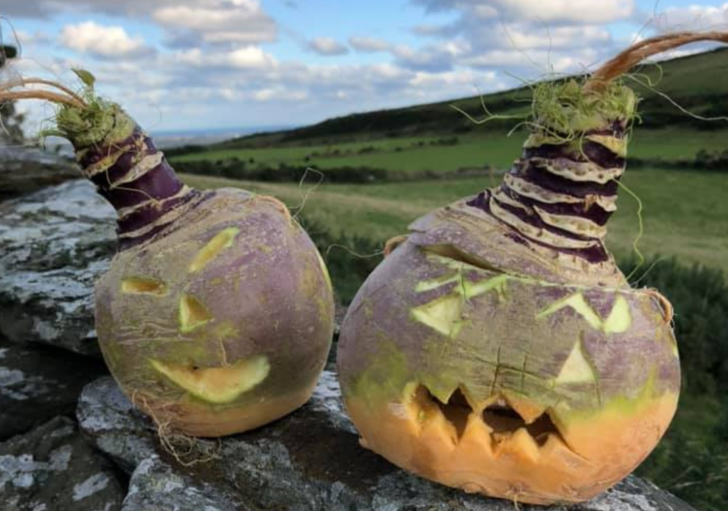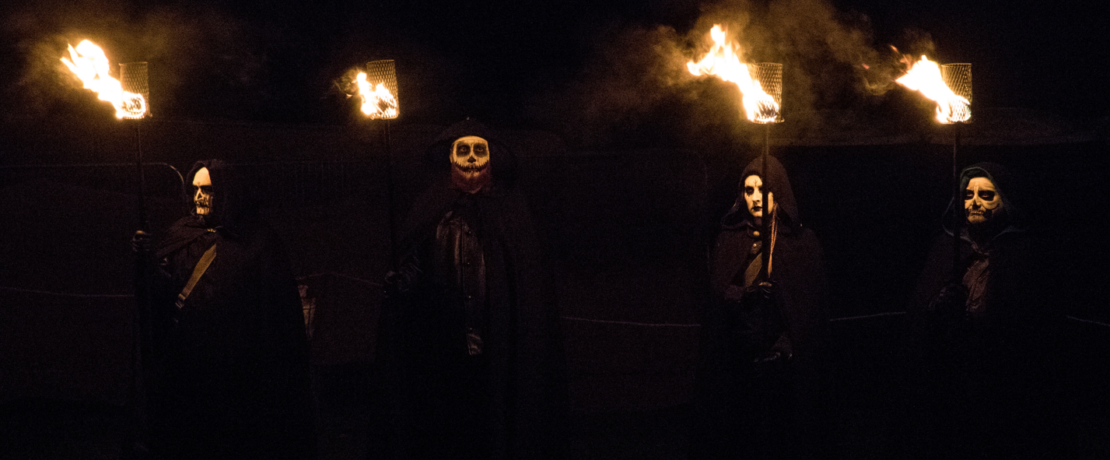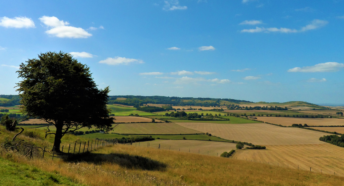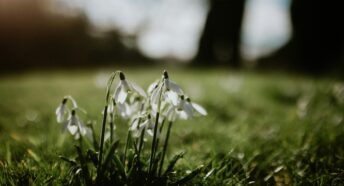Seasonal festivals and the passing of time
What can an agricultural festival teach us about the changing seasons and our relationship with time? Find out about the ancient origins of Halloween, listen to the wisdom of nature, and lean into a different pace as the year continues to turn.
Here in the UK, the end of the year is widely acknowledged to be 31 December, an approach that was set with the introduction of the Gregorian calendar in 1752. Before this, the new year was often celebrated in March, and in ancient times was dictated by the farming year: ‘when the harvest ended, so did the calendar; the winter months were simply unnamed.’ Now, of course, we flip over the first page of a new calendar and begin again with 1 January, but if we journey back through time, we can find evidence of a different approach here in the British Isles.
The festival of Samhain
Samhain (pronounced ‘sow-inn’) falls on 31 October, and you might know it better as Halloween, but this ancient fire festival formed the roots of its modern equivalent, marking both the end and beginning of the year in ancient agricultural societies. In pre-Roman Britain, the year was split into just two seasons, with Samhain honouring the end of summer and the onset of winter, and Beltane (1 May) marking the end of winter and start of summer. It has been suggested that these festivals were Celtic in origin, celebrated by Irish pagans in particular, who sought to honour deities at this crucial point of the farming cycle, to ensure a well-fed winter ahead.

In the early modern era, customs of Samhain began to be recorded, and these included bringing livestock in for winter, lighting bonfires, and appeasing gods and goddesses with offerings of food and drink. It is also said to be a time of year when the veils between the world of the living and the dead are at their thinnest, and traditionally people would have honoured the dead, telling stories of their ancestors, and celebrating the cycle of life, death and rebirth.
Modern celebrations
This celebration of seasonal change is still seen today in modern re-imaginings of ancient traditions. Samhuinn Fire Festival (which uses the Gaelic form of the word) in Edinburgh boasts fire-play, drumming and immersive performances to mark the rise of winter. Butser Farm in Hampshire also hosts a Samhain celebration inside their reconstructed roundhouse, offering storytelling, crafts and bonfires. Or you can head to Púca Festival in County Meath, Ireland, which aims to salute the Samhain spirits through folklore, food, myth and music!
Of course, for many, this time of year brings Halloween celebrations, which combine some of these ancient traditions with those connected to the Christian feast of the dead, All Souls’ Day (2 November), when the dead are mourned and people often visit and decorate graves to commemorate those seen to be in purgatory. One particular modern custom that seems to stem from this amalgamation is that of trick-or-treating, which echoes the tradition of giving soul cakes as an offering for the dead, and children who would go ‘souling’ with carved turnips as lanterns, requesting cakes in exchange for a song or performance of a play.

Apples are also a common feature of both Samhain and Halloween, and the custom of apple bobbing continues to this day, when a large tub or basin is filled with water, and players attempt to bite the apples that float on the surface! If you do manage to grab a mouthful, it’s said to bring good fortune for the year ahead, as apples are symbolic of fertility and abundance.
A change of pace
While for most of us now, the close of October does not mark the end of the year, the festival of Samhain nevertheless invites us to consider a change of pace for the season ahead. As fields are stripped and the agricultural year winds down with the waning light, the words of Chinese philosopher Lao Tzu are resonant: “Nature does not hurry, yet everything is accomplished.” Perhaps as we welcome the darkest phase of the year, we can find pockets of slowness amidst our busy lives, knowing that come springtime, the seeds and bulbs lying dormant beneath the surface will emerge once again.
You can learn more about Samhain here.
About the author
Eleanor Cheetham is a writer and teacher based in Lincolnshire, forever inspired by seasonal change and the folklore and stories of the land.









